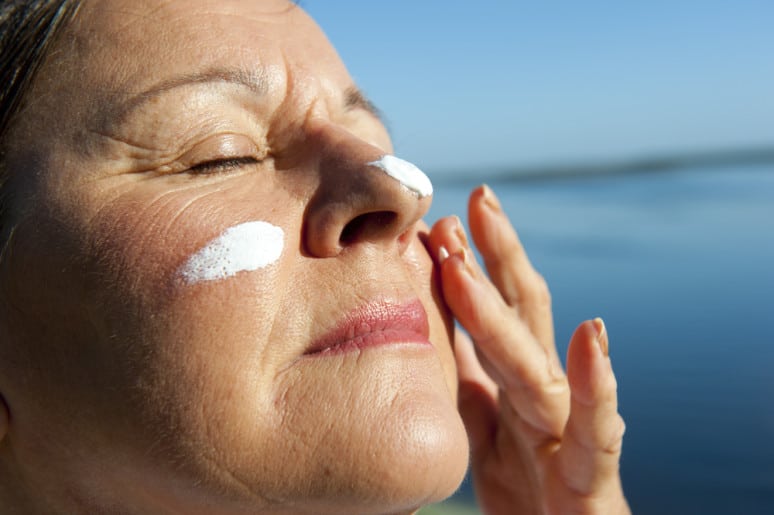Chronobiology of the Skin: The 24-Hour Cycle of Your Largest Organ
All life on earth and each organ in our body follow circadian rhythms that revolve around the 24-hour light/dark cycle. Scientists are discovering more and more about the unique circadian rhythm of the skin.
You are probably not aware that your skin follows its own circadian rhythm, but this cycle determines every action of your skin cells from the growth of new tissue to damage repair. Understanding the chronobiology of the skin can help you to better take care of this important organ, as well as also protect against some of the damage that occurs with aging.
The 24-Hour Cycle of Skin Cells
During the day, your skin is exposed to a variety of damaging elements from the environment. Radiation from normal sunlight can cause the formation of free radicals, and even DNA damage. The wind, pollution and other harsh environmental factors also damage delicate skin cells. Our skin would quickly become aged and dysfunctional if we didn't have cell cycles that allow for repair and rejuvenation.
 Most of the repair and growth of our skin cells occurs at night. This makes sense because nighttime is when skin is least likely to be exposed to damaging environmental stressors. Throughout most of human history, people spent the night asleep in dark areas where further damage was unlikely to occur. At night, DNA repair agents begin fixing the DNA damage from the day, while toxic elements and waste products are removed. Cells begin to replicate, undergoing mitosis to generate new cells to replace those that are dead or damaged. Blood and lymph flow to the skin also increases at this time so cells have the nutrient supply that they need to complete these essential processes. Skin cells are most susceptible to damage when they are actively repairing themselves.
Most of the repair and growth of our skin cells occurs at night. This makes sense because nighttime is when skin is least likely to be exposed to damaging environmental stressors. Throughout most of human history, people spent the night asleep in dark areas where further damage was unlikely to occur. At night, DNA repair agents begin fixing the DNA damage from the day, while toxic elements and waste products are removed. Cells begin to replicate, undergoing mitosis to generate new cells to replace those that are dead or damaged. Blood and lymph flow to the skin also increases at this time so cells have the nutrient supply that they need to complete these essential processes. Skin cells are most susceptible to damage when they are actively repairing themselves.
When the Chronobiology of the Skin Is Disturbed
When the natural circadian rhythm of the skin is disturbed, your skin cannot recover as effectively from daytime damage. Waste products can build up and cause further damage to the skin cells. New cells are not made as rapidly, giving skin a duller and older appearance. If DNA repair does not occur, the mutations and damage over time can lead to health concerns like skin cancer. The negative effects gradually build up over time, leading to noticeable damage over a lifetime. It does not take a lot to disturb the circadian rhythm of skin cells; exposure to elements and pollutants at night or simply not getting adequate sleep can interfere with these vital processes.
Preventing Aging by Working With Internal Clocks
 Understanding the chronobiology of your skin can allow you to prevent damage and also to develop skincare routines that complement your internal clock. Dermatologists recommend that people use external skin products that prevent damage during the day, such as sunscreen and gentle moisturizers. At night, external skin products that assist in damage repair, such as retinol and alpha and beta hydroxy acids, will have more effects. In addition, certain lifestyle changes and the addition of a chronobiology-based dietary supplement that promotes skin health can help your skin to rejuvenate itself. Getting high-quality sleep at night consistently allows more stable circadian rhythms. Preventing nighttime exposure to toxins, such as cigarette smoke and weather, protects skin at a time when it is most prone to damage.
Understanding the chronobiology of your skin can allow you to prevent damage and also to develop skincare routines that complement your internal clock. Dermatologists recommend that people use external skin products that prevent damage during the day, such as sunscreen and gentle moisturizers. At night, external skin products that assist in damage repair, such as retinol and alpha and beta hydroxy acids, will have more effects. In addition, certain lifestyle changes and the addition of a chronobiology-based dietary supplement that promotes skin health can help your skin to rejuvenate itself. Getting high-quality sleep at night consistently allows more stable circadian rhythms. Preventing nighttime exposure to toxins, such as cigarette smoke and weather, protects skin at a time when it is most prone to damage.
Our skin is our largest organ, protecting our bodies from the elements and performing essential activities such as synthesizing vitamins. Understanding the chronobiology of the skin will allow people to enjoy a healthier, more youthful appearance and to prevent health problems that are caused by accumulated damage.





